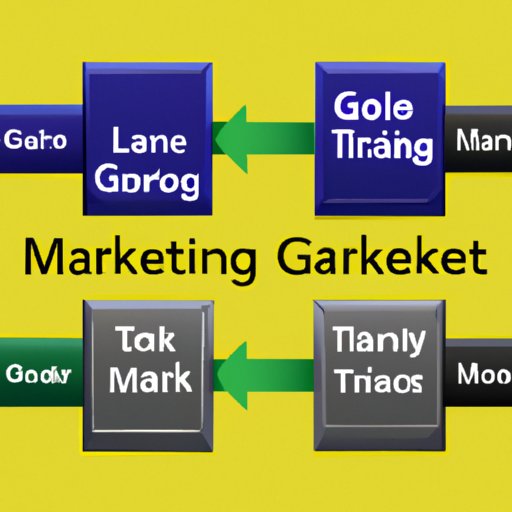Introduction
A go-to-market (GTM) strategy is a plan that outlines how you’ll bring a product or service to the marketplace. It includes details about your target market, pricing strategy, distribution channels, promotional tactics, and more. A well-thought-out GTM strategy can make all the difference in the success of your product or service launch.
In this article, we’ll discuss the steps for developing an effective go-to-market strategy. We’ll cover topics such as identifying your target audience, researching competitors, setting prices, and creating a plan for promoting your product or service. Let’s get started.
Identify Your Target Market and Define Your Value Proposition
The first step in developing a go-to-market strategy is to identify your target market and define your value proposition. This will help you determine who your product or service is designed for and what makes it unique.
Identifying Your Target Audience
When it comes to identifying your target audience, you need to consider factors such as demographics, psychographics, and geography. Demographic factors include age, gender, income level, education, and marital status. Psychographic factors are related to lifestyle, values, attitudes, and interests. And geography refers to the geographic region you’re targeting.
It’s important to do research to gain a better understanding of your target audience. You can use surveys, interviews, focus groups, and other methods to collect data about potential customers. This will help you create a profile of your ideal customer and understand their needs, wants, and pain points.
Determining Your Unique Selling Point
Once you’ve identified your target audience, the next step is to determine your unique selling point. This is the benefit or feature of your product or service that sets it apart from others in the marketplace. It could be a low price, superior quality, or something else.
To come up with your unique selling point, you need to understand your competition. Research the products and services they offer and find out what makes them stand out. Then, think about how you can differentiate yourself from the competition.
According to a survey by Forrester Consulting, “60% of senior-level executives say that companies must differentiate themselves from the competition to be successful in today’s market.”
Analyze Your Competitors’ Strategies
Once you’ve identified your target audience and determined your unique selling point, it’s time to analyze your competitors’ strategies. This will help you understand their strengths and weaknesses and give you insight into what works and what doesn’t.
Researching Your Competition
To research your competition, start by looking at their websites and other online materials. Take note of their products and services, pricing structure, and marketing messages. You should also read reviews and ratings to get an idea of how customers perceive their offerings.
It’s also important to keep an eye on their social media accounts and industry news. This will help you stay up to date on their activities and any changes they’re making.
Examining Their Pricing Strategies
When analyzing your competitors’ pricing strategies, look at the prices they charge for similar products or services. Consider factors such as discounts, promotions, and payment plans. This will help you determine where you fit in the marketplace and how your pricing compares.
You should also look at the pricing models they use. Do they offer one-time payments, subscriptions, or a la carte options? Understanding their pricing models can help you decide which model is best for your business.
Understanding Their Distribution Channels
Another factor to consider when analyzing your competitors’ strategies is their distribution channels. Take note of the channels they use to reach their customers. Are they selling directly to customers, through third-party retailers, or both? Knowing this information can help you decide which channels are right for your business.
For example, if your competitors are using both direct and retail channels, you may want to consider doing the same. This will help you reach more potential customers and increase your sales.
Develop Your Distribution Channels
Now that you’ve analyzed your competitors’ strategies, it’s time to develop your own distribution channels. This involves deciding which channels are best for your business and establishing partnerships with the right vendors and retailers.
Choosing the Right Channels
When choosing your distribution channels, consider factors such as cost, convenience, and reach. Look at the fees associated with each channel and compare them to the potential revenue you can generate. You should also think about how easy it is for customers to buy your product or service and how many potential customers you can reach.
Establishing Partnerships
Once you’ve identified the channels you want to use, you need to establish partnerships with the appropriate vendors and retailers. This involves negotiating terms and signing agreements. Make sure you understand the terms of the agreement and have a clear understanding of what’s expected of both parties.
Considering Logistical Factors
In addition to choosing the right channels and establishing partnerships, you also need to consider logistical factors. This includes things like shipping and fulfillment, returns, customer service, and more. Make sure you have a plan in place for handling these tasks so you can provide a smooth experience for your customers.
Establish Your Pricing Strategy
Once you’ve developed your distribution channels, it’s time to establish your pricing strategy. This involves setting your prices and deciding whether or not to offer discounts and promotions.
Setting Your Prices
When setting your prices, take into account the costs associated with your product or service. Factor in things like manufacturing, materials, labor, shipping, and overhead. You should also consider the prices of competing products and services and how much value your product or service provides.
Offering Discounts and Promotions
Discounts and promotions can be a great way to attract customers and boost sales. However, you need to be careful not to underprice your product or service. If you’re offering discounts or promotions, make sure you’re still making a profit.

Create a Plan for Promoting Your Product or Service
The next step in developing a go-to-market strategy is to create a plan for promoting your product or service. This involves crafting an effective marketing message and utilizing different platforms to reach your target audience.
Identifying Your Unique Selling Points
When creating your marketing message, you need to emphasize your unique selling points. What makes your product or service stand out from the competition? What benefit does it provide customers? These are the points you want to focus on when crafting your message.
Crafting an Effective Marketing Message
Your marketing message should be clear, concise, and compelling. Try to incorporate your unique selling points and emphasize the value of your product or service. You should also use language that resonates with your target audience and encourages them to take action.
Utilizing Social Media and Other Platforms
Once you’ve created your marketing message, it’s time to start promoting your product or service. Utilize social media platforms such as Facebook, Twitter, and Instagram to reach your target audience. You should also consider other platforms such as email, paid advertising, and influencer marketing.

Set Goals and Measure Success
The final step in developing a go-to-market strategy is to set goals and measure success. This will help you track your progress and make adjustments as needed.
Defining Measurable Goals
When setting goals, make sure they’re measurable. This will allow you to track your progress and make adjustments if necessary. Examples of measurable goals include increasing sales by 10%, reducing customer churn rate by 5%, and increasing website traffic by 20%.
Evaluating Your Progress
Once you’ve set measurable goals, it’s important to evaluate your progress. Measure your performance against the goals you’ve set and adjust your strategy as needed. You should also collect feedback from customers to gain insight into their experience.
Adapt Your Go-to-Market Strategy as Needed
As you implement your go-to-market strategy, it’s important to remain flexible and adapt as needed. Keep an eye on industry trends and make adjustments to your strategy accordingly. This will ensure your strategy stays relevant and effective.
Making Adjustments
Don’t be afraid to make changes to your go-to-market strategy as needed. This could involve adjusting your pricing strategy, revamping your promotional tactics, or exploring new distribution channels. Making adjustments will help you stay competitive and maximize your chances of success.
Taking Advantage of Trends
It’s also important to take advantage of trends in the marketplace. This could involve utilizing new technologies, leveraging emerging platforms, or exploring new markets. Doing so will help you stay ahead of the competition and capitalize on opportunities.
Conclusion
Developing a go-to-market strategy is essential for launching a successful product or service. From identifying your target market to analyzing competitors and creating a plan for promoting your product or service, there are many steps involved. By following the tips outlined in this article, you can create an effective go-to-market strategy that will help you reach your goals.
(Note: Is this article not meeting your expectations? Do you have knowledge or insights to share? Unlock new opportunities and expand your reach by joining our authors team. Click Registration to join us and share your expertise with our readers.)
